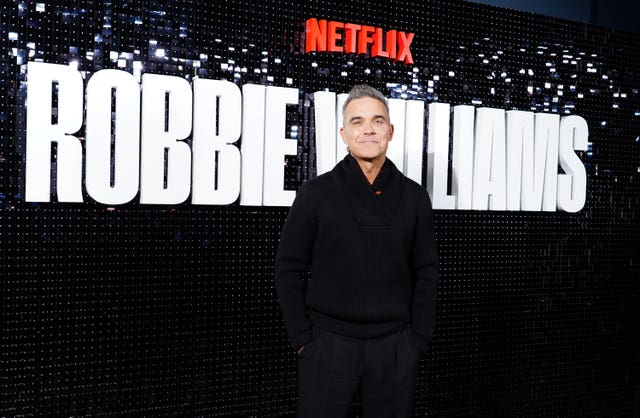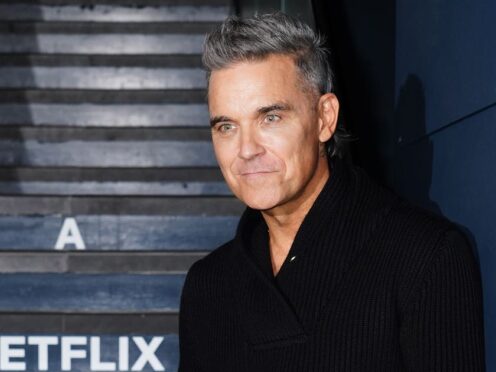A new Netflix documentary about Robbie Williams has been hailed as an “honest insight” into the star but has also been branded “navel-gazing”.
The four-part series – which charts the 49-year-old’s rise as a member of Take That, his struggles with addiction, mental health issues and what the last episode calls “redemption” – has been given a mixed reception by critics.
Most of the reviews of the programme, titled Robbie Williams, were particularly struck by the singer’s “on-stage panic attacks”, which the Guardian called “horrific to watch”.
The newspaper rated the documentary two stars out of five, saying it is a “claustrophobic, navel-gazing, four-hour-long monologue delivered by Robbie” that makes makes “grim viewing”.

Its review said Williams “is more evidence that celebrity is an affliction and an addiction” and claimed it is “so hard to empathise” with the We Will Rock You and Let Me Entertain You singer.
It concludes: “It turns out it’s surprisingly tricky to emotionally connect with someone when all you see is them – as this myopic documentary has proven to its own detriment.”
However, The Times disagreed, giving the documentary five stars and praising it as “a searing examination of the price of fame”.
“It revealed a fragile young man being slowly broken on fame’s wheel until he collapsed, addicted to alcohol, drugs, cigarettes, approval,” the newspaper said.
The Telegraph said that while Williams is “articulate and thoughtful”, the format “has an anaesthetised quality”, and awarded the series three stars.
The paper questioned whether there was “anything new to learn” about the pop star, who “has always been candid and has nothing to hide”, while contrasting the series with other documentaries about celebrities.
“The endless shots of Williams pacing around his house, or his face bathed in the glow of a laptop screen, are deadening,” the review added. “It plays out like an extended therapy session.”
The i newspaper also rated the series three stars while questioning if the documentary was “exploitative”.
“It’s hard not to come to such a conclusion, especially since the ending – in which a present-day Williams leaves his crying children to go on tour, the very thing that broke him in the first place – feels so quietly devastating,” its critic said.
The Independent gave the series four stars and called it “undoubtedly a PR exercise” while also praising the “rawness” of the archive footage.
It added: “Robbie Williams combines titillation and pity as effectively as its namesake does braggadocio and vulnerability.”
